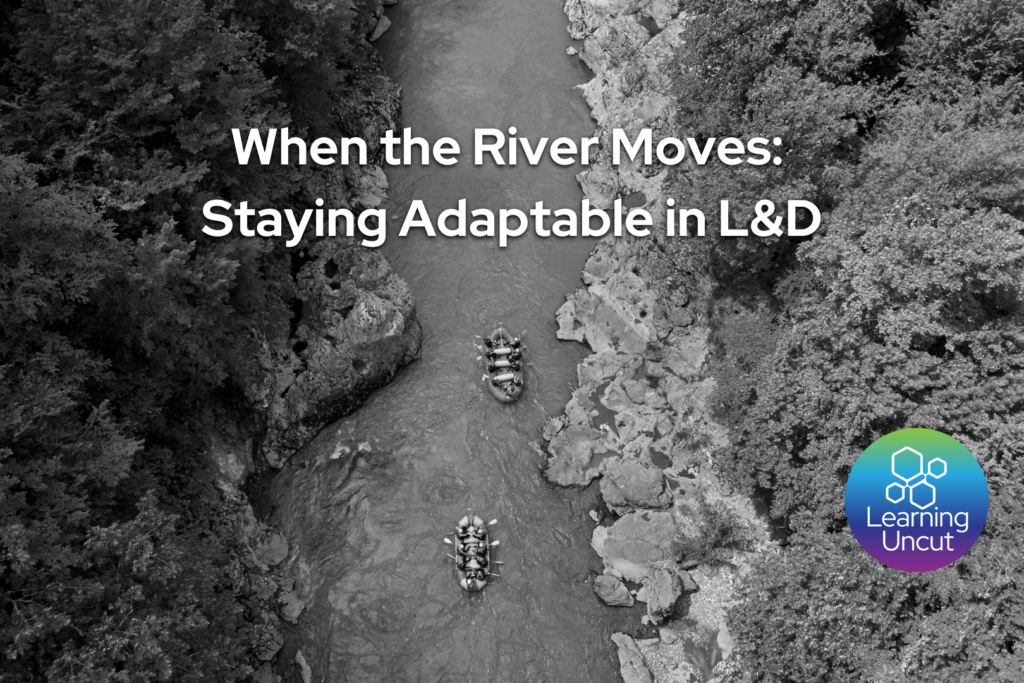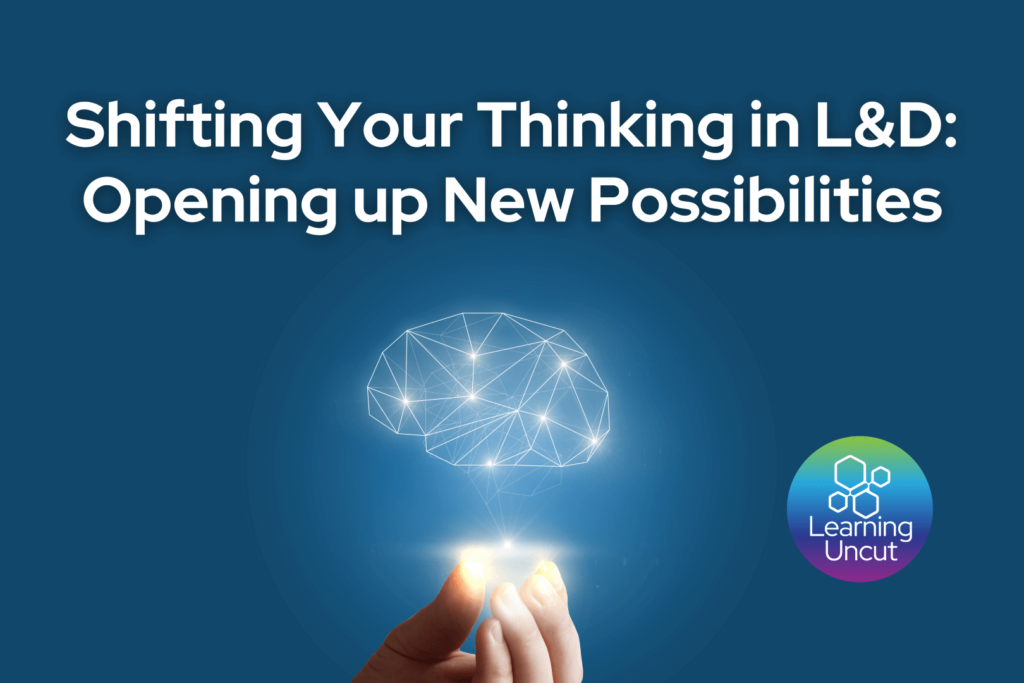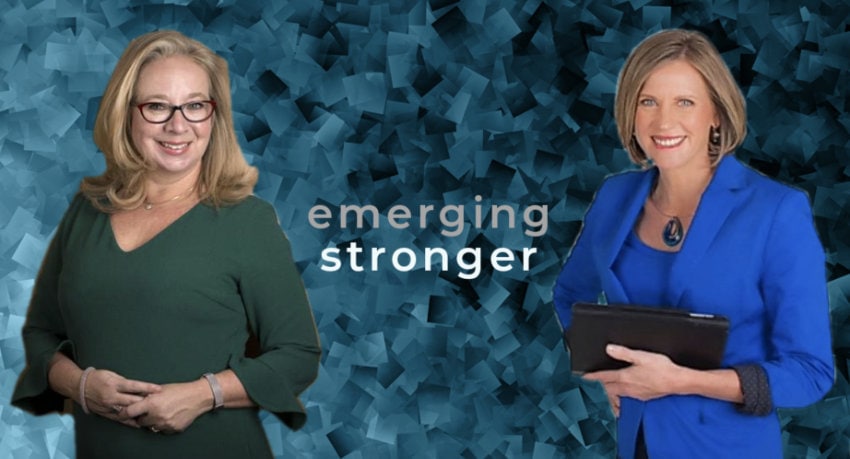Like other industry awards around the globe, last week’s Australian Institute of Training and Development Excellence Awards celebrated the remarkable work of the finalists and the impact they are having within their organisations. As I congratulated the finalists during my opening keynote, I asked them an important question: In a world of constant change, how do we keep adapting?
Rivers of Change
Two years ago, I moved to a beautiful small town on the south coast of New South Wales called Tuross Head. Several times a week, I walk to the end of my street and look out over the mouth of the river with my partner, Mark. Over the past few months, we’ve noticed a lot of changes at the river mouth. The sandbanks have grown, blocking one of the channels to the ocean. The main channel is getting narrower. The waves are breaking differently, and the movement of the water is becoming more chaotic. We’re beginning to wonder if the river mouth might shift further south in coming years.
This change is gradual enough that we can see it unfolding. But sometimes, change happens much faster and catches us by surprise.
Take the fate of the Choluteca Bridge in Honduras. This bridge was a critical piece of infrastructure on the Pan-American Highway, stretching 30,000 kilometres along the Pacific Coast from North to South America. Between 1996 and 1998, engineers built a new 484-meter bridge designed to withstand the worst hurricanes. And it did — when Hurricane Mitch, a Category 5 storm, hit Honduras in October 1998, the bridge was left standing while 150 others were destroyed.
But there was one problem. The hurricane shifted the river itself and destroyed the roads connecting to either end, leaving the bridge standing proudly over dry land and earning it the nickname ‘the bridge to nowhere.’ The engineers built a fantastic bridge, but they hadn’t considered the possibility that the river might move.
In Learning & Development, we aren’t building physical bridges, but we are building learning strategies, programs and pathways for our organisations. Like rivers, the world around us is constantly shifting. Sometimes, we see the change happening, like my observation of the Tuross River. Other times, the shift is sudden and disruptive, and we have to adapt quickly.
Enter the Jerk
There’s a term borrowed from physics that describes this kind of rapid shift – it’s called a ‘jerk.’ In physical terms, a jerk refers to a sudden change in acceleration or deceleration. It’s that jarring feeling when a car speeds up or stops abruptly.
In a metaphorical sense, a jerk is any disruptive change that feels like a shock, throwing us off balance and demanding immediate adaptation. Think back to March 2020 – one day we were in the office, and the next we were scrambling to train our entire workforce on Zoom.
That wasn’t a one-off. We are constantly surrounded by potential jerks: technological shifts like the rise of GenAI, political shifts like Brexit and cultural shifts like the MeToo movement.
In May 2023, I attended the Learning Technologies conference in London and the Association for Talent Development conference in San Diego. At both events, I saw the L&D industry grappling with the GenAI jerk. People were scrambling to come to grips with this new technology. The exhibition halls were packed, and it was standing room only at sessions about AI. It felt chaotic.
In 2024, while there’s still uncertainty around GenAI, our response as an industry has become more settled. We’re now seeing practical examples of how AI is being used, from content creation to coaching bots to personalised learning recommendations.
Why Adaptability Matters
It’s not just technological changes we need to adapt to. Shifts in business strategy, changes in regulations or emerging workforce roles and skills can all demand rapid response.
That’s not a bad thing. It just means that as L&D professionals, we need to stay adaptable. The programs that were essential yesterday may no longer be relevant tomorrow. The learning approaches that worked last year might be ineffective in the coming year.
It’s tempting to rely on what has worked in the past, but we need to be ready for the moment when the river moves – when our organisations and workforce need something different from us. Otherwise, we might end up building our own bridges to nowhere.
Practical Tips for Staying Adaptable
So how do we avoid building those bridges to nowhere? Here are some practical strategies to help you stay adaptable:
- Look Up and Look Out: Constantly scan the environment, both inside and outside your organisation. Pay attention to signals that indicate things are shifting. Listen to your workforce, stay informed about other initiatives, and keep track of changing business goals and skills needs. Staying attuned to these shifts will help you respond before it’s too late.
- Stay Curious: Keep up with what’s happening in L&D and how others are responding to change. Attend networking events and conferences, listen to podcasts and attend webinars. This isn’t about chasing shiny new trends but about being aware of innovations that can inform your decisions in your context.
- Experiment, Test, and Learn: Try new ideas on a small scale. This allows you to assess what works and refine your approaches. By continuously experimenting, you’ll be better prepared to adapt as circumstances change.
- Foster a Culture of Continuous Learning: One of the best ways to help your organisation stay adaptable is by fostering a culture of continuous learning. This isn’t just about having employees log into a content library. It’s about embedding learning practices and habits across the workforce. Create environments where learning happens across teams, silos and with external partners. Encourage learning even in the absence of formal programs, so your people are ready to adapt to change.
Staying Adaptable
The key to staying adaptable is to keep looking up and out, always scanning for what’s shifting. Ask yourself regularly: Am I aware of what’s changing? Am I ready for the next jerk?
Because whether it’s a technological disruption, a shift in business strategy or something unexpected, our ability to sense, respond, and adapt will be what keeps us moving forward.
Let’s stay agile, stay curious, and be ready for the river to move.


